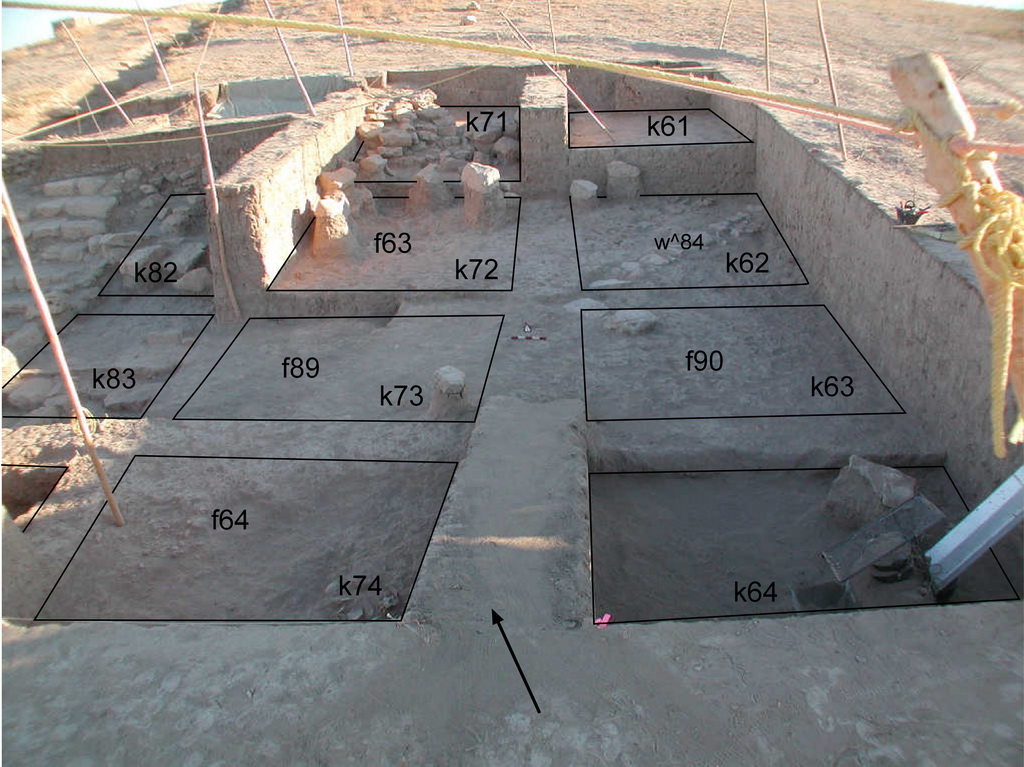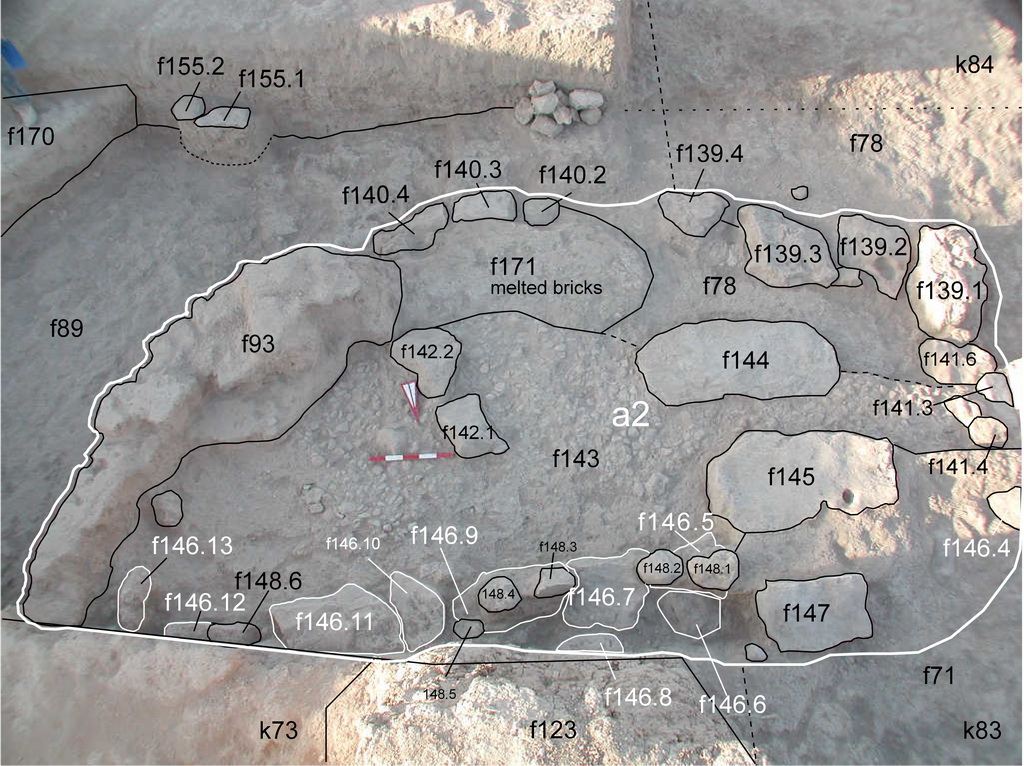The excavation started from the topsoil and then interested a thick layer natural accumulations (soil blown and wind and water-born in nature) which contributed to the build-up of the tell surface for aprox. 2 meter in deep (related with Phase 85-MZA and Phase 67-MZA). The build-up due to the natural accumulations is visibile in the long N-S section of tJ4 area as visible in v32 and related subviews, which shows how the soil matrix that form the build-up of the tell mound for aPproximately two meter is the same. Within the lower meter of accumulations lots of pottery sherds have been collected (which date these layers to Phase 67-MZA), however, in spite of the pottery sherds recovered, there are no evidence of active use or human activity within J4 area in Phases h85-MZA and h67-MZA (Late Mittani period), as it is cleary visible from v32 and related subviews (no structures have been exposed within the whole area, besides f10, which was already exposed since the beginning of the excavation).
v61 show the area after aprox. 2 weeks excavation. This view shows the mud-brick and stone structures that were in use in Phase 65-MZA (dated to the Middle Mittani Period), a period in which major rebuilding in different portion of the temple mound, as we know from J2 and J4 areas. It is however unclear the exact function of the various mud-brick and stone structures, since, we exposed in most of the cases only the top-face of these structures, which are concentrated in few loci (k71- k73, k62). We assume that these were related with activities connected with the temple area.
The excavations however, did not clarify one of the goals set for this excavation season, which was understand the nature of f10. Before the beginning of the excavation it was expected to expose in J4 the secondary Apron and, perhaps a staircase or portion of a staircase, since we were thinking in the possibility of finding in J4 a specular structure to J2, given f10, the alligned stones in k71, besides of the difference elevation with the stones in J2 Unit. At the end of the excavation season we just cleared that f10 does not belong to a a possible secondary Apron, and we leave the question on the nature of this stone structure open to further investigation. the goal of the excavation season was to find the continuation of f10 south or to the east and understand its nature and explore if any activities took place within this portion of the tell mound. However, a unexpected find while carrying out the sounding in k100, opened new questions on the stratigraphy of J4 area and of this portion of the tell mound, that was left open for further investigation: clarify and better understand the presence of 3rd millennium BC levels and cleary located directly below Mittani accumulations. This question, however, has been fully cleared with the excavation carried out in Unit J6 in the last two excavation seasons, where layers dated to the end of the 3rd millennium BC were exposed directly below Mittani accumulations (cfr. J6 Phase h32 and h33-MZA in J6 k84 and J6 k85).
|
|
|


|
|